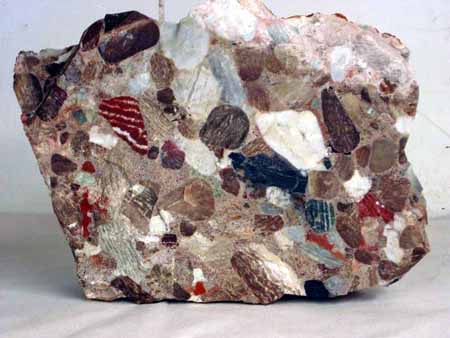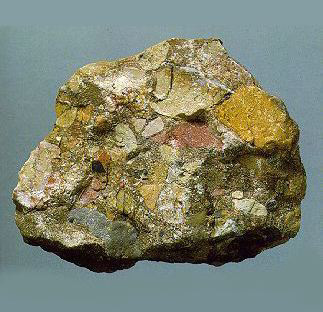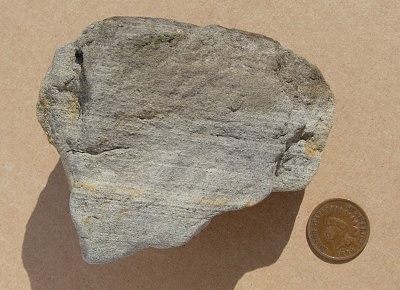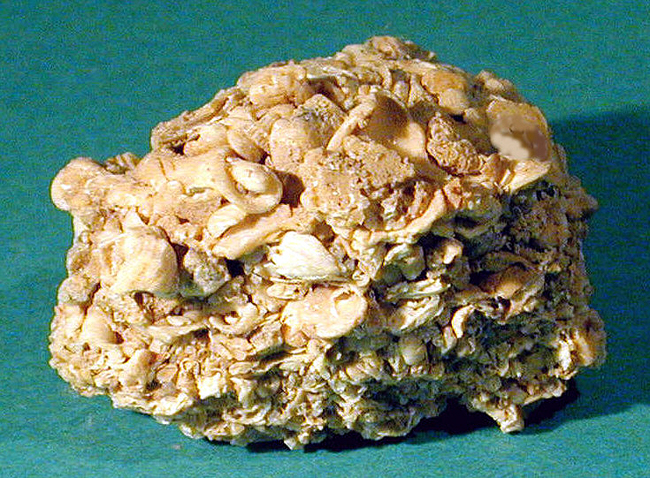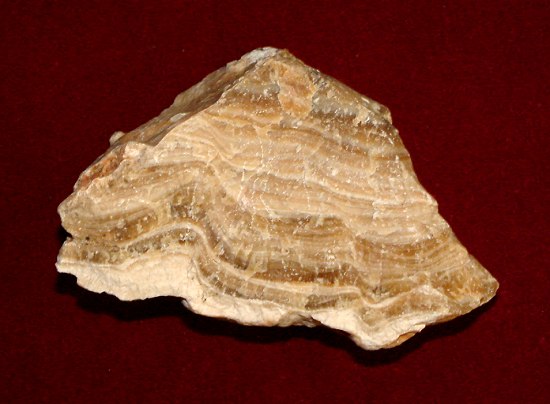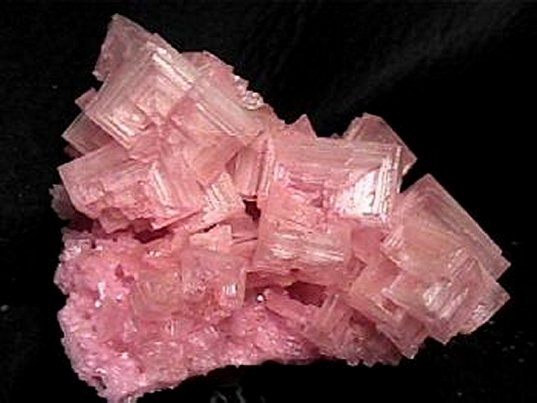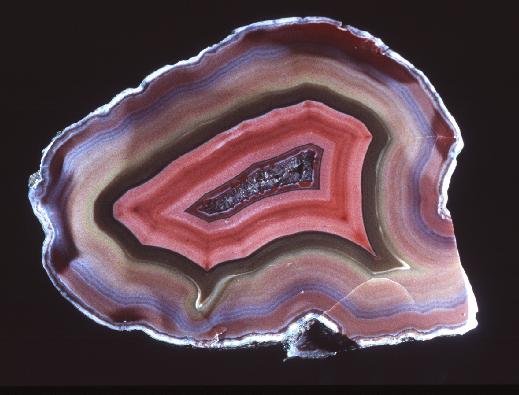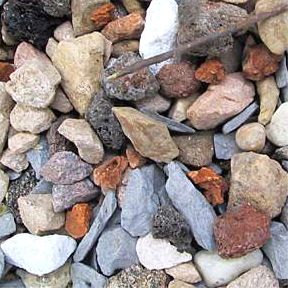 |
ROCKS |
 |

Sedimentary Rocks
 Sedimentary rocks make up a thin layer of the uppermost part of the Earth's crust.
They are used to reconstruct the the Earth's history. Sedimentary rocks contain fossils giving clues to the past. These rocks can also be analyzed for sediment composition giving information about past Earth processes. The layers called strata or beds are characteristic features that help geologists decipher the environment in which the rock formed. The strata are separated by bedding planes, flat surfaces where rocks separate and break. Bedding planes mark the different episodes of sedimentation.
Sedimentary rocks make up a thin layer of the uppermost part of the Earth's crust.
They are used to reconstruct the the Earth's history. Sedimentary rocks contain fossils giving clues to the past. These rocks can also be analyzed for sediment composition giving information about past Earth processes. The layers called strata or beds are characteristic features that help geologists decipher the environment in which the rock formed. The strata are separated by bedding planes, flat surfaces where rocks separate and break. Bedding planes mark the different episodes of sedimentation.
Creation of a Sedimentary Rock
- Weathering-wind, water, glaciers
- Transportation of Sediment-gavity, running water, glaciers, wind
- Deposition
- Compaction and Cementation
- more layers are deposited and compression occurs reducing pore space
- water deposits mineral matter in spaces between particles
Classifying Sedimentary Rocks
Detrital Sedimentary Rocks
- Formed from solid particles created from weathered rocks
- Solid particles are called detritus
- Wide range of rock pieces and minerals
- clay minerals and quartz predominate
- Particle size is used to classify sedimentary rocks
- conglomerates - rounded, gravel-sized particles
- rounded pieces indicate the source rock is at a greater distance to the deposition area because the pieces have been weathered
- breccia - angular, gravel-sized particles
- angular pieces indicate the source rock is close to the deposition area because the pieces are not weathered and the corners and edges are abraded
- sandstone - sandsized particles make up the rock
- siltstone - composed of fine-grained sediment; similar to shale
- shale - composed of fine-grained sediment; most abundant
Particle size indicates environmental conditions in which the rock formed.
- Fast-paced rivers have more energy and an ability to transport larger sediments; a similar result occurs with wind currents
- Siltstones and shales settle slowly indicating formation occurred in quiet waters
Chemical Sedimentary Rocks
- Formed from material carried in solution
- Precipitation froms chemical sediments
- Biochemical origin occurs when water dwelling organisms extract dissolved minerals to form shells and other hard parts which accumulate when the organisms die
- Classified by mineral composition
- Types of chemical sedimentary rocks
- Limestones - most abundant - predominantly calcite
- Coquina - biochemical limestone made of loosely cemented shell fragments
- Chalk - soft and porous made of the hard parts of microorganisms
- Travertine - formed from precipitate of calcium carbonate as carbon dioxide escapes from water
- Evaporites (halite and gypsum) - deposits of minerals left by the evaporation of a body of water
- Coal - chemically altered organic material
- Silicon dioxide rocks - chert, flint, jasper, and agate






 Sedimentary rocks make up a thin layer of the uppermost part of the Earth's crust.
They are used to reconstruct the the Earth's history. Sedimentary rocks contain fossils giving clues to the past. These rocks can also be analyzed for sediment composition giving information about past Earth processes. The layers called strata or beds are characteristic features that help geologists decipher the environment in which the rock formed. The strata are separated by bedding planes, flat surfaces where rocks separate and break. Bedding planes mark the different episodes of sedimentation.
Sedimentary rocks make up a thin layer of the uppermost part of the Earth's crust.
They are used to reconstruct the the Earth's history. Sedimentary rocks contain fossils giving clues to the past. These rocks can also be analyzed for sediment composition giving information about past Earth processes. The layers called strata or beds are characteristic features that help geologists decipher the environment in which the rock formed. The strata are separated by bedding planes, flat surfaces where rocks separate and break. Bedding planes mark the different episodes of sedimentation.
